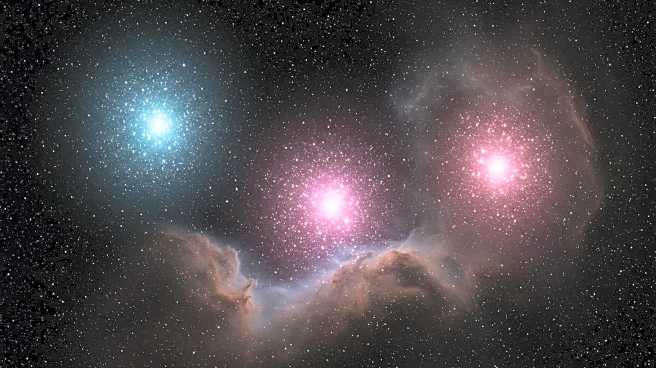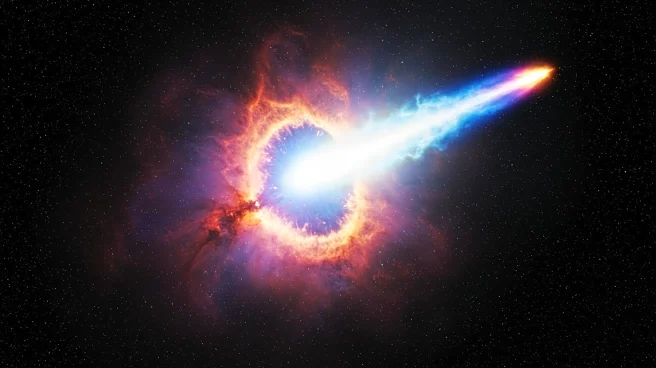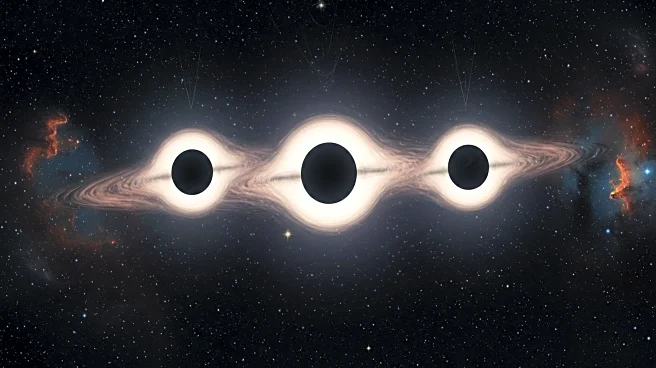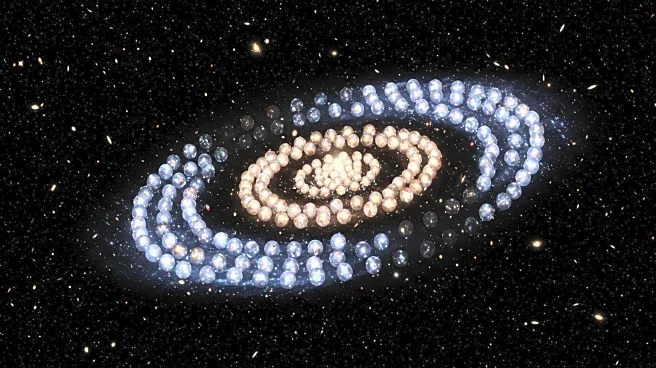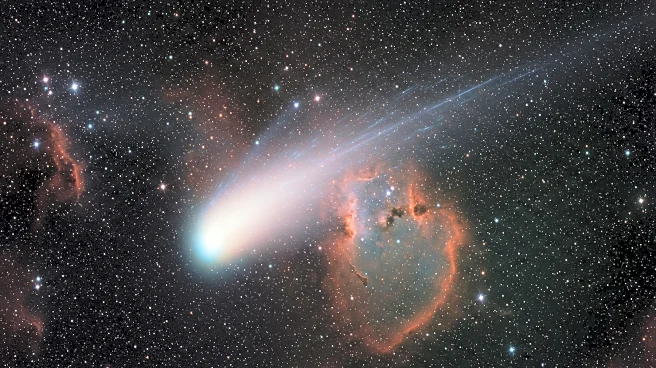What is the story about?
What's Happening?
Astronomers have identified a colossal structure within the Milky Way, known as the Midpoint Cloud, using the Green Bank Telescope. This Giant Molecular Cloud spans 650 trillion miles and contains dense gas clumps and masers, indicating active star formation processes. The discovery, led by Dr. Natalie Butterfield of the National Radio Astronomy Observatory, highlights the importance of advanced telescopic technologies in exploring cosmic territories. The Midpoint Cloud plays a crucial role in the cosmic ecosystem, serving as a cradle for star and planet formation.
Why It's Important?
The discovery of the Midpoint Cloud offers profound insights into the flow of matter within the Milky Way, impacting star formation and galactic evolution. The active regions within this cloud serve as conduits, transporting material from the galaxy's disk to its core, akin to hidden rivers nurturing the heart of the Milky Way. This finding enriches our understanding of stellar evolution and the intricate processes that sustain our galaxy, providing a unique opportunity to examine the initial conditions of gas before it accumulates in the galactic center.
What's Next?
Continued study of the Midpoint Cloud promises to unlock further secrets of star birth and galactic evolution. Researchers aim to explore star formation mechanisms in barred spiral galaxies like the Milky Way, clarifying how dense gas accumulates and triggers star formation in such environments. This research could lead to new insights into the conditions necessary for new stars to emerge and thrive in the universe.
Beyond the Headlines
The presence of masers and shell-like structures within the Midpoint Cloud suggests ongoing star formation and supernova explosions, highlighting the cycle of creation and destruction in the galaxy. This discovery underscores the importance of employing modern telescopic technologies to reveal hidden phenomena that contribute to our understanding of the universe.
AI Generated Content
Do you find this article useful?





